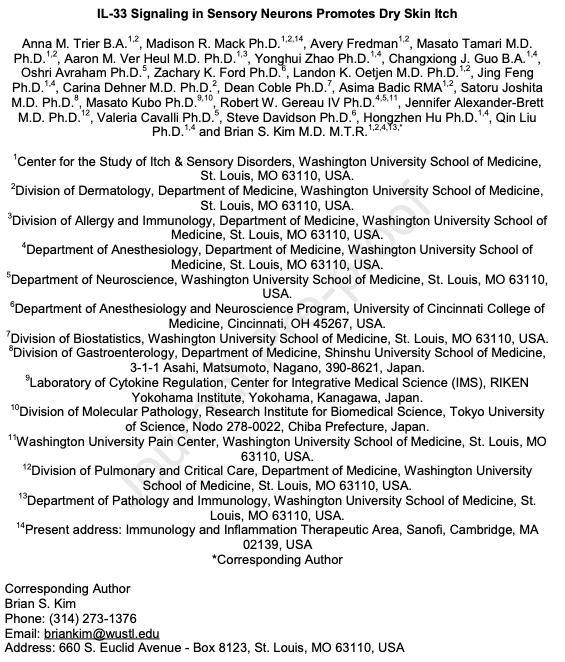Journal club – 2022. 01. 28
MrgprB4 in trigeminal neurons expressing TRPA1 modulates unpleasant sensations
Shota Tobori a, 1, Haruka Hiyama a, 1, Takahito Miyake a, b, Yuichi Yano a, Kazuki Nagayasu a, Hisashi Shirakawa a, *, Takayuki Nakagawa c, Yasuo Mori d, Shuji Kaneko a
a Department of Molecular Pharmacology, Graduate School of Pharmaceutical Sciences, Kyoto University, 46-29 Yoshida-Shimoadachi-cho, Sakyo-ku, Kyoto 606-8501, Japan
b Department of Systems Biology, Graduate School of Pharmaceutical Sciences, Kyoto University, 46-29 Yoshida-Shimoadachi-cho, Sakyo-ku, Kyoto 606- 8501, Japan
c Department of Clinical Pharmacology and Therapeutics, Kyoto University Hospital, 54 Shogoin -Kawahara-cho, Sakyo-ku, Kyoto 606-8507, Japan
d Department of Synthetic Chemistry and Biological Chemistry, Graduate School of Engineering, Kyoto University, Building A4, Katsura Campus, Nishikyo-ku, Kyoto 615-8510, Japan
ABSTRACT
Gentle touch such as stroking of the skin produces a pleasant feeling, which is detected by a rare subset of sensory neurons that express Mas-related G protein-coupled receptor B4 (MrgprB4) in mice. We examined small populations of MrgprB4-positive neurons in the trigeminal ganglion and the dorsal root ganglion, and most of these were sensitive to transient receptor potential ankyrin 1 (TRPA1) agonist but not TRPV1, TRPM8, or TRPV4 agonists. Deficiency of MrgprB4 did not affect noxious pain or itch be- haviors in the hairless plantar and hairy cheek. Although behavior related to acetone-induced cold sensing in the hind paw was not changed, unpleasant sensory behaviors in response to acetone appli- cation or sucrose splash to the cheek were significantly enhanced in Mrgprb4-knockout mice as well as in TRPA1-knockout mice. These results suggest that MrgprB4 in the trigeminal neurons produces pleasant sensations in cooperation with TRPA1, rather than noxious or cold sensations. Pleasant sensa- tions may modulate unpleasant sensations on the cheek via MrgprB4.
© 2021 The Authors. Production and hosting by Elsevier B.V. on behalf of Japanese Pharmacological Society. This is an open access article under the CC BY-NC-ND license (http://creativecommons.org/ licenses/by-nc-nd/4.0/).
Journal club – 2022. 01. 28 Read More »

